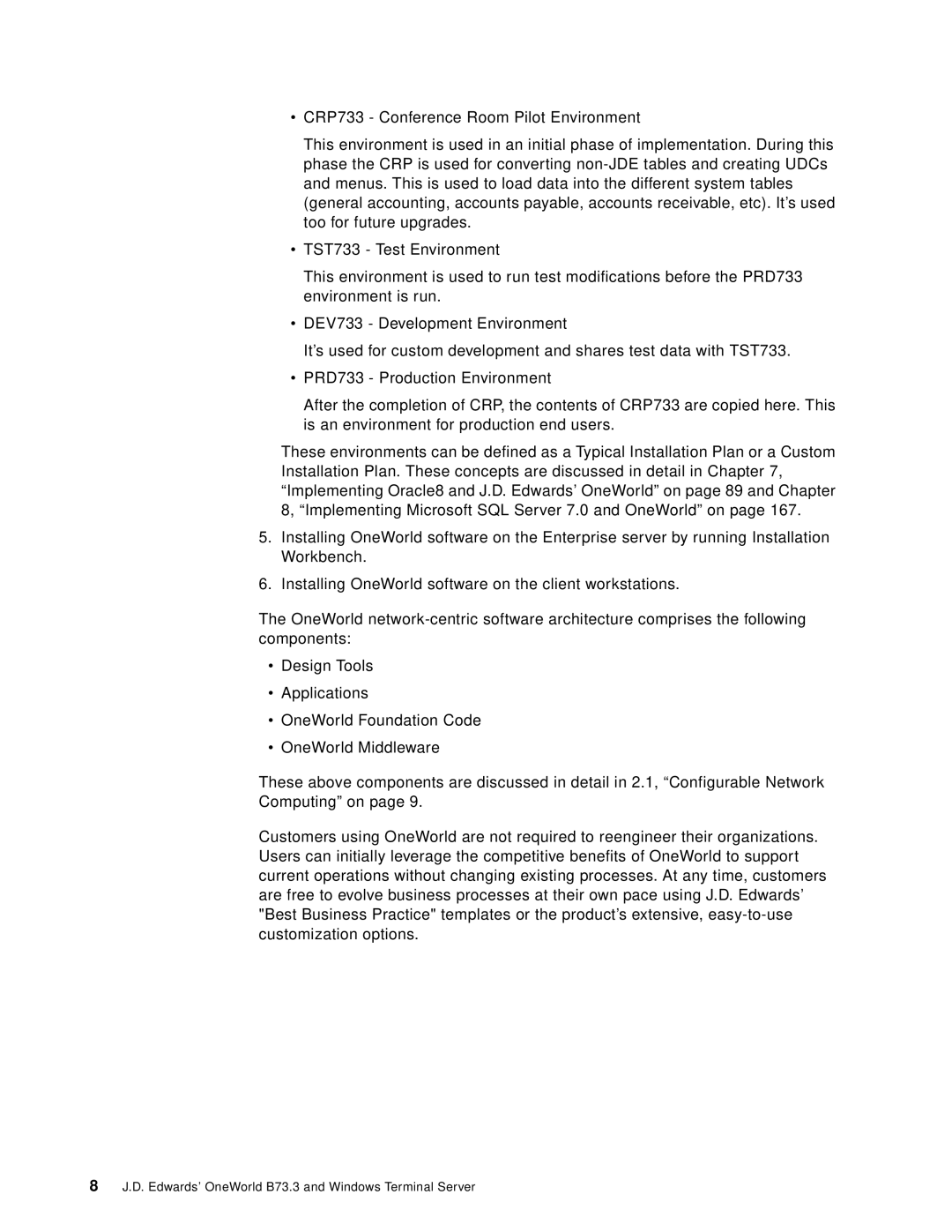•CRP733 - Conference Room Pilot Environment
This environment is used in an initial phase of implementation. During this phase the CRP is used for converting
•TST733 - Test Environment
This environment is used to run test modifications before the PRD733 environment is run.
•DEV733 - Development Environment
It’s used for custom development and shares test data with TST733.
•PRD733 - Production Environment
After the completion of CRP, the contents of CRP733 are copied here. This is an environment for production end users.
These environments can be defined as a Typical Installation Plan or a Custom Installation Plan. These concepts are discussed in detail in Chapter 7, “Implementing Oracle8 and J.D. Edwards’ OneWorld” on page 89 and Chapter 8, “Implementing Microsoft SQL Server 7.0 and OneWorld” on page 167.
5.Installing OneWorld software on the Enterprise server by running Installation Workbench.
6.Installing OneWorld software on the client workstations.
The OneWorld
•Design Tools
•Applications
•OneWorld Foundation Code
•OneWorld Middleware
These above components are discussed in detail in 2.1, “Configurable Network Computing” on page 9.
Customers using OneWorld are not required to reengineer their organizations. Users can initially leverage the competitive benefits of OneWorld to support current operations without changing existing processes. At any time, customers are free to evolve business processes at their own pace using J.D. Edwards’ "Best Business Practice" templates or the product’s extensive,
